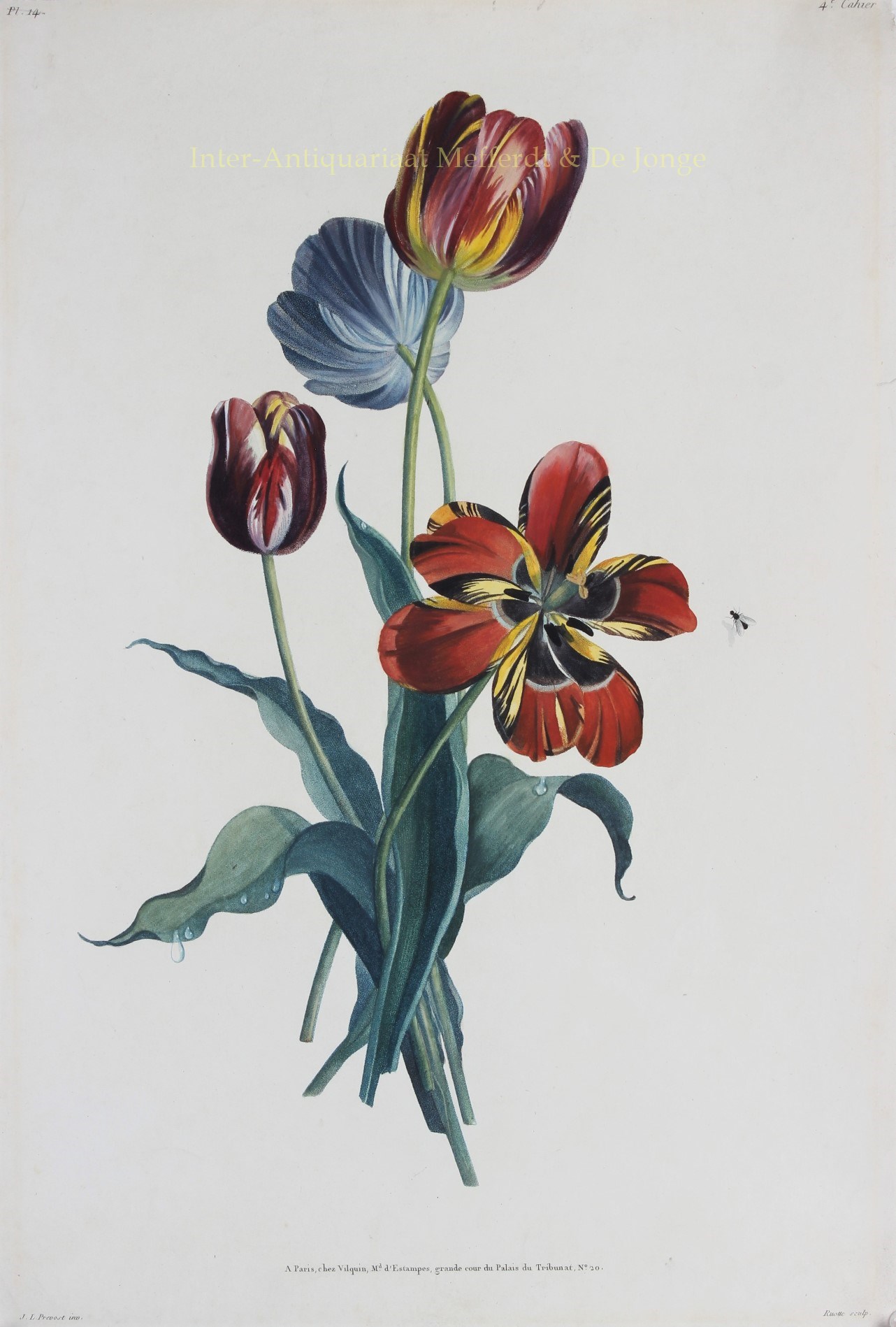Four tulips, stipple engraving made by Louis Charles Ruotte after the design of Jean Louis Prévost. Published as part of the “Collection des fleurs et des fruits peints d’apres nature” in Parijs by Vilquin in 1805. Printed in colour with additions by a later hand. Size (image): approx. 41 x 25,5 cm.
These exquisite engravings present Prévost’s mastery both of decorative design and descriptive rigor. The “Collection” was lauded as one of the greatest early nineteenth-century French flower books and also one of the earliest stipple-engraved and colour-printed books produced, was never bound as a volume.
During his lifetime, Prévost was a successful and widely renowned botanical painter, respected both for his watercolour and oil paintings and for his engraved works. He was a pupil of Jean Jacques Bachelier in Paris, and became a member of the Académie de Saint Luc. His paintings were consistently exhibited in the prestigious Paris Salon, and his original watercolours served as models for a series of sumptuous color-plate botanical books.
Unlike Pierre-Joseph Redouté, his great contemporary, Prévost’s intention with his works was not primarily scientific. His “Collection” was intended as a reference work for china and fabric pattern designers, and the aesthetic sensibility dominates any documentary goal in his lavishly executed compositions. In these engravings, Prévost demonstrates his mastery of the traditional still-life genre. The delicate, detailed and highly accurate depiction of each fruit and leaf exemplifies the artist’s exceptional rendering skill, and the nuanced use of stipple engraving to create shadow and light makes the subject appear to emerge from the paper with vibrant three-dimensionality. The luminosity of stipple engraving is particularly suited to the reproduction of botanical detail. It is essentially a technique of etching a copper plate with a dense grid of dots that can be modulated to convey delicate gradations of colour and tone. The plates were painted with watercolour before each impression, creating a rich and subtle colour quality that is deeply pressed into the paper.
The most delicate highlights and details are then added by hand to finish each print according to the original watercolour that Prévost provided. This complex and delicate printing process combines the technical virtuosity and aesthetic sensitivity that characterizes this great age of French botanical works.
Price: SOLD


